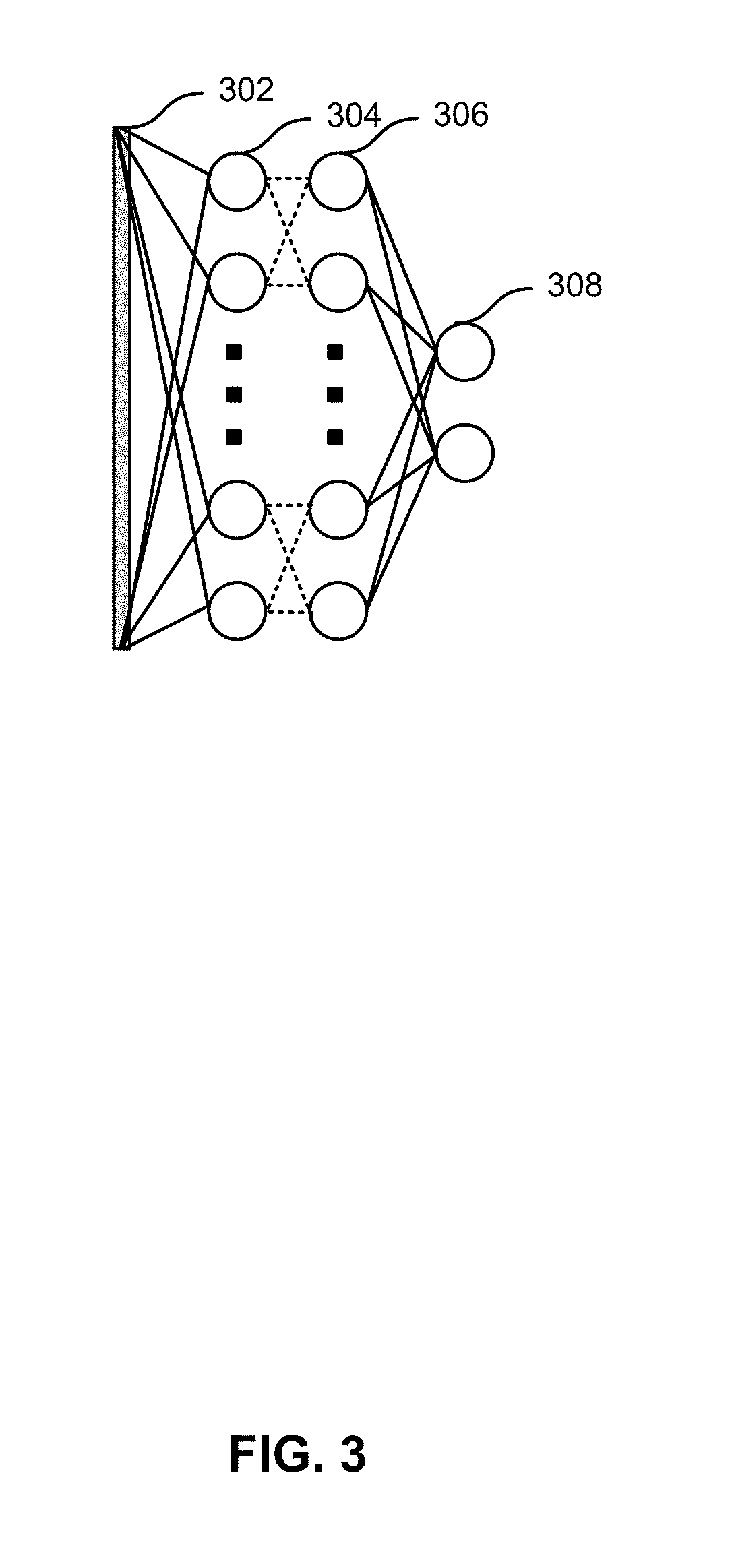Speckle contrast analysis using machine learning for visualizing flow
a contrast analysis and flow technology, applied in the field of image analysis using machine learning, can solve the problems of blood vessels not always near the surface of a tissue, not always easily imaged, blurred or low contrast image characteristics, etc., and achieve the effect of reducing the difficulty of image processing, and improving the accuracy of image processing
- Summary
- Abstract
- Description
- Claims
- Application Information
AI Technical Summary
Benefits of technology
Problems solved by technology
Method used
Image
Examples
example 1
[0061]FIG. 9 shows the ground truth label and image data used for training a machine learning model. FIG. 9 shows images of the same sample used in FIG. 1. The sample is an artificial construct of subsurface blood flow in live tissue. The sample included plastic tubing with blood flow sandwiched between two layers of pork meat.
[0062]In this example, the raw data image is shown in the upper left. The image in the upper right shows the raw data image labeled with an overlay showing the ground truth label for flow, based on a photograph with the top meat layer removed. The labeled areas of flow are used as the motion data set for training. The motion data set indicated the probability of each pixel having flow, where 1 indicates flow and 0 indicates static (no flow). The image data set for training is an incomplete subset of randomly selected pixels from the raw data image and the intensities of each pixel of the randomly selected pixels. The lower left image shows darker bands that ma...
example 2
[0063]FIG. 10 shows images of different regions of interest in the top row and intensity histograms of the different regions in the bottom row. The different regions of interest are labeled as 1 as having flow or 0 for not having flow based on a ground truth flow map. The histograms show intensity on the x-axis and number of pixels having the intensity on the y-axis. The histogram distributions of the intensities of the regions labeled with flow have different distributions than those regions labeled as having no flow. For example, regions with flow show histogram distributions that are narrower than those without flow. The machine learning model may use the shape or other characteristics of a histogram distribution as a parameter or hidden variable in training.
example 3
[0064]FIG. 11 shows raw images and output data indicating flow in the raw images generated by a logistic regression machine learning model. The images in FIG. 11 are the results from training using the training targets and validation targets from FIG. 9. Red pixels show areas identified by the machine learning model as having a greater than 50% probability of having flow. The statistics of regions of interest considered for training were the standard deviation divided by the mean, median, skewness, and the minimum. The training and testing was used with different size regions. The upper left images show results with a 7×7 region. The upper right images show results with a 11×11 region. The lower left images show results with a 15×15 region. The lower right images show results with a 19×19 region. The results with a 7×7 region shows more noise by identifying many isolated pixels as having flow. The 11×11 region shows fewer isolated pixels as having flow. Larger regions of interest ma...
PUM
 Login to View More
Login to View More Abstract
Description
Claims
Application Information
 Login to View More
Login to View More - R&D
- Intellectual Property
- Life Sciences
- Materials
- Tech Scout
- Unparalleled Data Quality
- Higher Quality Content
- 60% Fewer Hallucinations
Browse by: Latest US Patents, China's latest patents, Technical Efficacy Thesaurus, Application Domain, Technology Topic, Popular Technical Reports.
© 2025 PatSnap. All rights reserved.Legal|Privacy policy|Modern Slavery Act Transparency Statement|Sitemap|About US| Contact US: help@patsnap.com



